Wired eduroam for Windows 7 and 10
You don't need to do steps marked ** if you have already been using
eduroam over wireless.
-
** Ensure that your computer contains AddTrust External CA Root
certificate. Browse using
Microsoft Internet Explorer on computers that you will use with
eduroam (this will install a certificate to your Windows computer
automatically). Ensure you have a full network connection
first (or repeat when you do).
-
** get your eduroam
identifier and token (unless you've done so) NOTE: the same
password is used for both wired and wireless eduroam.
-
Check that your computer is running a service called "Wired
AutoConfig". First open the Services dialog. On Windows 7:
- Click Start, then right-click the Computer item
- Choose Manage, choose Services and Applications, Services
On Windows 10, click Start then start typing "services" and choose
the Best Match option which pops up.
-
Find the item Wired AutoConfig
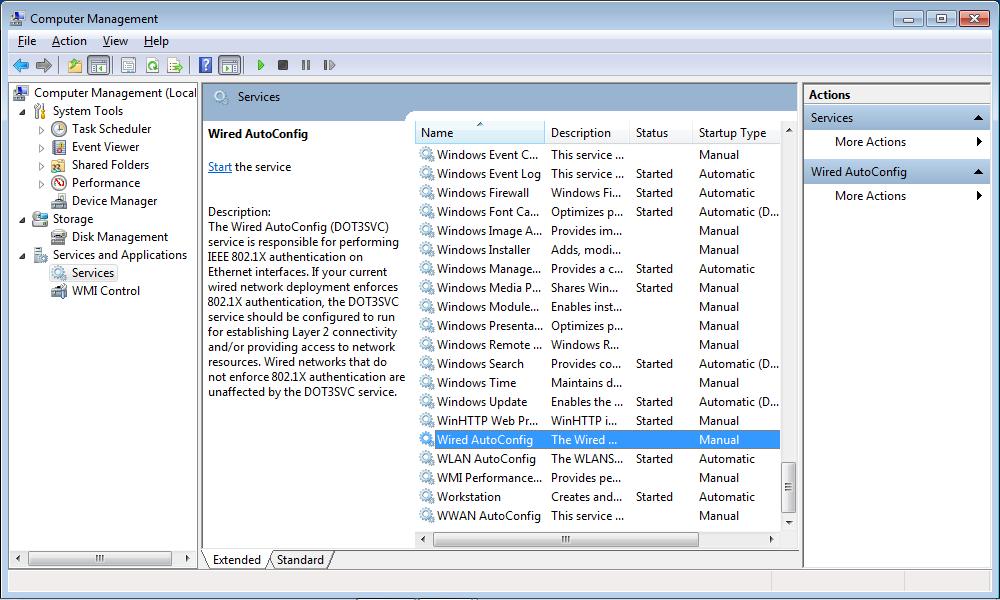
-
Right-click Properties and set Startup Type: Automatic. You
can startup the service immediately from this window by
pressing Start (unless it is already running)
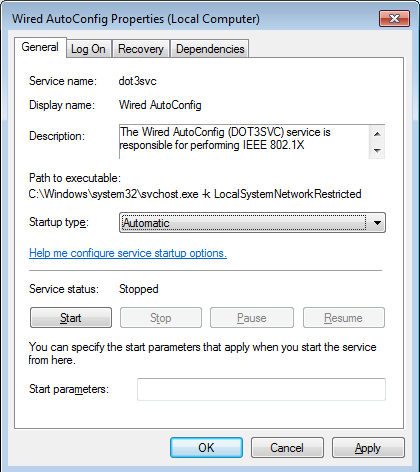
- Close the dialog by pressing OK
-
Turn on the 802.1X PEAP authentication as you would with the
wireless eduroam. This is done via "Change Adapter Settings /
Options" under "Network and Internet". On Windows 7:
-
Press Start, then "Control Panel", then
"Network and Internet"
-
then "Network and Sharing Centre", then "Change
adapter settings"

On Windows 10 it is Start, then the Settings cogwheel, then
"Network and Internet" then "Change adapter options"
-
Right click on the wired connection (Local Area Connection)
and Select Properties
- Click on the "Authentication" tab
-
Check Enable IEEE 802.1X Authentication, select Microsoft:
Protected EAP (PEAP)
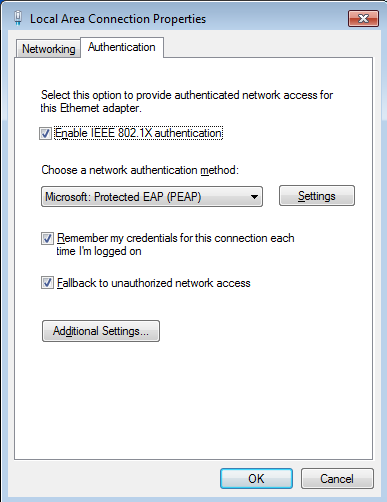
- Click on "Settings"
-
Check "Validate server certificate" and "AddTrust
External CA Root"

- Select Secured password (EAP-MSCHAP v2) and Click Configure
-
Uncheck Automatically use my Windows logon name and password
(and domain if any). Confirm by pressing OK
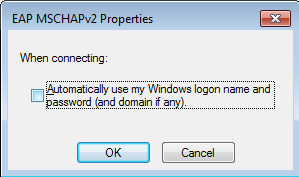
- Click OK, OK
-
Now select "Additional Settings" (lower button), Check
that you have the 802.1X settings tab and, from the pull-down menu
select User authentication then select OK, then OK :
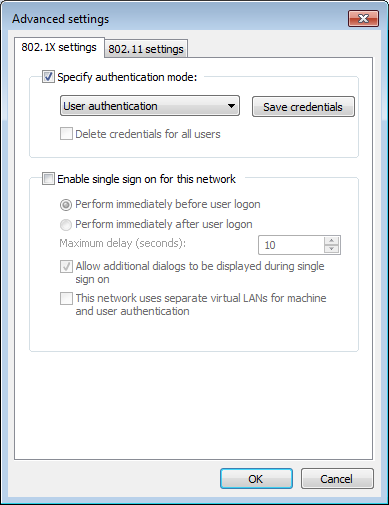
-
Plug the computer into a wired eduroam port. A popup will probably
appear at bottom left about authentication details. Click on the
popup and login:
- Logon name: login@cam.ac.uk
-
Password : the
password from the tokens service as entered in step 2

-
When prompted "Certificate authority is not anchored for
this type of connection", press Connect
-
Note: On some Windows 7 systems cut-and-paste for the token
does not work. You will have to type in your token
manually.
If you never get the authentication detail popup then you can go to
the "Additional Settings" (from the authentication tab of
the device properties) and then click the "Save credentials"
(later "Replace credentials") to enter the eduroam token
info.







